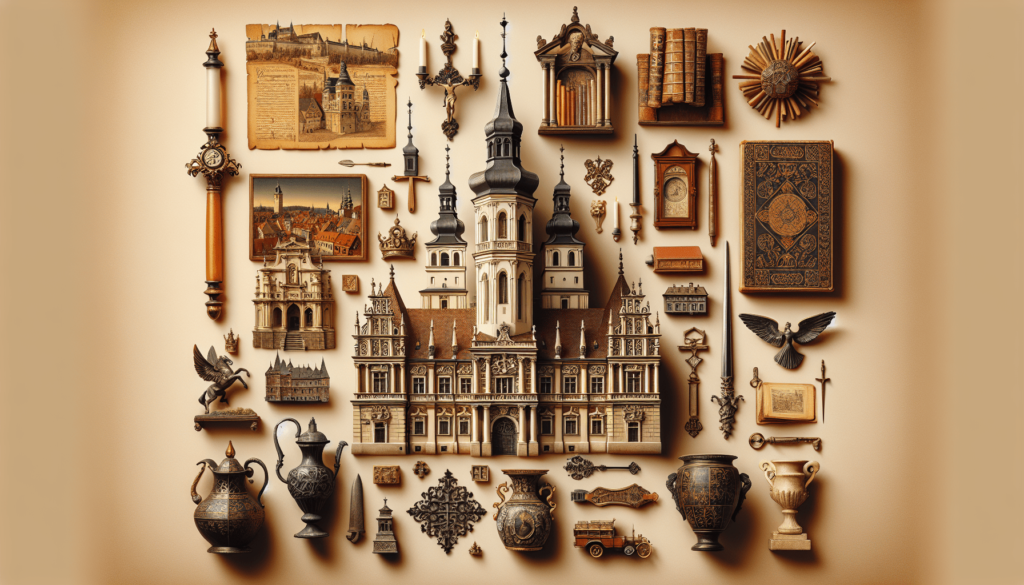Imagine stepping back in time and exploring the rich history of Eastern Europe. The 10 best historical sites in Eastern Europe, from stunning castles to ancient ruins, this region is a treasure trove of historical sites waiting to be discovered. Whether you are a history enthusiast or simply seeking an immersive cultural experience, Eastern Europe has something for everyone.
Join us on a captivating journey as we uncover some of the best historical sites this region has to offer. Get ready to be transported to a world of fascinating stories and breathtaking architecture that will leave you in awe.
1. Prague Castle
History
Prague Castle, located in the heart of Prague, Czech Republic, is one of the oldest and largest castles in the world. Its origins date back to the 9th century, making it a site rich with history. Over the centuries, it served as the seat of power for kings, emperors, and presidents, making it a symbol of the city’s political importance.
Architecture
The architecture of Prague Castle is a beautiful blend of Gothic, Renaissance, and Baroque styles. The castle complex spans across an area of more than 70,000 square meters and is home to several palaces, churches, and gardens. The iconic St. Vitus Cathedral, with its stunning stained glass windows and intricate details, is a prominent feature within the castle complex.
Highlights
Visiting Prague Castle allows you to explore its numerous highlights. The Old Royal Palace, where kings were once crowned, showcases the stunning Vladislav Hall, known for its impressive vaulted ceilings. The Golden Lane, a charming street lined with cute colorful houses, offers a glimpse into the lives of castle inhabitants throughout the centuries. Be sure not to miss the changing of the guard ceremony, which takes place daily and adds a touch of grandeur to the overall experience.
2. Auschwitz-Birkenau Memorial and Museum
History
The Auschwitz-Birkenau Memorial and Museum, located near Oswiecim, Poland, is a haunting reminder of the atrocities committed during the Holocaust. Originally built as a concentration camp during World War II, it later became one of the largest extermination centers where millions of innocent lives were lost.
Holocaust Remembrance
Visiting the Auschwitz-Birkenau Memorial and Museum is a solemn experience that serves as a powerful tribute to the victims of the Holocaust. The museum offers insight into the horrors endured by those imprisoned within its walls through powerful exhibitions and preserved barracks. It is a place to reflect, remember, and educate oneself about the darkest chapters of human history.
Visiting Information
To visit the Auschwitz-Birkenau Memorial and Museum, it is recommended to book a guided tour in advance to ensure a better understanding of the site’s significance. The museum is open to the public year-round; however, be prepared for an emotionally challenging visit. Respectful behavior and appropriate attire are expected, as this is a place of remembrance.

3. Hermitage Museum
History
The Hermitage Museum, located in St. Petersburg, Russia, is one of the oldest and largest museums in the world. Its history dates back to 1764 when Empress Catherine the Great founded it as a private collection. Today, it houses over three million works of art and artifacts, showcasing the rich cultural heritage of Russia and the world.
Art Collections
The Hermitage Museum boasts an incredible collection that spans different eras and civilizations. From ancient Egyptian artifacts to Renaissance masterpieces and Impressionist paintings, art enthusiasts will find themselves immersed in a world of artistic brilliance. The museum’s collection also includes decorative arts, numismatics, and archaeological findings.
Architecture
The architectural beauty of the Hermitage Museum is unparalleled. Housed within the opulent Winter Palace, the museum is a work of art in itself. Its grand façade, adorned with intricate details and majestic columns, sets the stage for the treasures within. Walking through its magnificent halls and breathtaking galleries is a journey through history and art.
4. Acropolis of Athens
History
The Acropolis of Athens, Greece, stands as a testament to the splendor of Ancient Greek civilization. Perched atop a rocky hill, it was once the center of the city-state and remains a symbol of its cultural and architectural achievements. Dating back to the 5th century BC, the Acropolis is a UNESCO World Heritage Site and a must-visit destination for history lovers.
Architectural Marvel
The architectural marvels of the Acropolis are awe-inspiring. The most famous of these is the Parthenon, dedicated to the goddess Athena. Its perfectly proportioned columns and intricate sculptures are a testament to the skill and craftsmanship of the Ancient Greeks. Other structures, such as the Erechtheion and the Propylaea, also possess their own unique charm and historical significance.
Ancient Ruins
Exploring the Acropolis allows you to immerse yourself in the rich tapestry of Ancient Greek history. The ruins offer a glimpse into the daily life, religion, and politics of this advanced civilization. As you wander through the site, you can envision the grandeur of a bygone era while enjoying panoramic views of the city below.

5. Saint Petersburg Historic Centre and Related Groups of Monuments
History
The Saint Petersburg Historic Centre and Related Groups of Monuments, located in Saint Petersburg, Russia, embody the grandeur and cultural heritage of the city. Founded by Tsar Peter the Great in 1703, Saint Petersburg quickly became Russia’s cultural capital and a hub of architectural and artistic brilliance.
Palaces and Cathedrals
Saint Petersburg’s historic center is home to numerous palaces and cathedrals that showcase the city’s opulence and religious significance. The Peter and Paul Fortress, with its stunning Peter and Paul Cathedral, is a must-visit. The Hermitage Museum, housed within the Winter Palace, is another magnificent structure that captivates visitors with its grandeur.
The Winter Palace
The Winter Palace, part of the Saint Petersburg Historic Centre, is an architectural masterpiece. Its striking green and white façade, adorned with elaborate ornamentation, is a sight to behold. Inside, the palace is a treasure trove of art and history, showcasing the opulent lifestyle of Russia’s tsars through its lavishly decorated rooms and galleries.
6. Hagia Sophia
History
Hagia Sophia, located in Istanbul, Turkey, is a historic marvel that bears witness to the city’s rich and diverse past. Originally built as a Byzantine cathedral in the 6th century, it later served as an Ottoman mosque and is now a museum. Its history reflects the blend of Eastern and Western influences that have shaped Istanbul over the centuries.
Religious Significance
Hagia Sophia holds great religious significance, having served as a center of worship for both Christianity and Islam. Its grand dome, adorned with magnificent mosaics, represents the intersection of these two faiths. The interior of the building exudes an aura of spirituality, making it a place of reflection and reverence for visitors of all backgrounds.
Architecture
The architecture of Hagia Sophia is a testament to the ingenuity and skill of its builders. The massive dome, supported by intricate pendentives and arches, is a masterpiece of Byzantine engineering. The interior is adorned with stunning mosaics, depicting religious figures and scenes that showcase the artistry of the time.
7. Dubrovnik Old Town
History
Dubrovnik Old Town, located in Croatia, is a well-preserved medieval city that offers a glimpse into the region’s rich history. Surrounded by imposing walls, the old town’s streets are lined with grand palaces, churches, and charming squares. Dubrovnik has a storied past as a maritime hub and powerful city-state, and its historical significance is evident throughout the town.
Medieval Walls
The medieval walls that encircle Dubrovnik Old Town are a testament to the city’s fortification and defensive strategies. Walking along the walls offers panoramic views of the Adriatic Sea and the town’s charming red-roofed buildings. The walls have withstood the test of time, protecting the city from invaders for centuries.
Pristine Architecture
Dubrovnik Old Town’s architecture is pristine, characterized by its well-preserved Renaissance and Baroque buildings. The elegant Stradun, the main thoroughfare, is lined with stunning palaces that house museums, galleries, and shops. The city’s monasteries and churches, such as the Dubrovnik Cathedral and the Franciscan Monastery, exhibit exquisite craftsmanship and artistic treasures.
8. Bran Castle
History
Bran Castle, nestled in the Carpathian Mountains of Transylvania, Romania, is shrouded in legends and immortalized in Bram Stoker’s novel, “Dracula.” While not directly linked to the famous vampire, the castle has a rich history that spans over seven centuries. It served as a strategic fortress, a royal residence, and later became a popular tourist destination.
Dracula Legends
Bran Castle’s association with Dracula legends has added to its allure. The castle’s Gothic architecture and its eerie setting atop a hill make it the perfect backdrop for vampire stories. Visitors can explore its chambers and secret passages, imagining the mystery and intrigue that surround the fictional Count Dracula.
Spectacular Surroundings
Bran Castle is surrounded by breathtaking natural beauty, with the Carpathian Mountains providing a picturesque backdrop. The castle itself offers stunning views from its windows and terraces, adding to the overall charm of the visit. The surrounding area offers opportunities for hiking, exploring nearby villages, and experiencing the unique culture of Transylvania.
9. Buda Castle
History
Buda Castle, located in Budapest, Hungary, is a majestic symbol of the city’s tumultuous past. Originally built in the 13th century, the castle has undergone various iterations and expansions throughout its history. It has served as a royal residence, a military fortress, and is now home to museums, galleries, and the Hungarian National Library.
Impressive Views
Visiting Buda Castle rewards you with impressive panoramic views of Budapest. Perched atop Castle Hill, overlooking the Danube River, the castle allows you to appreciate the city’s iconic skyline and the architectural wonders on both sides of the river. Whether it’s day or night, the views from Buda Castle are simply breathtaking.
National Gallery
Buda Castle is home to the Hungarian National Gallery, showcasing an extensive collection of Hungarian fine art. The gallery houses works from the Middle Ages to the present day, including paintings, sculptures, and contemporary installations. Exploring the gallery allows you to delve into Hungary’s rich artistic heritage and gain a deeper understanding of its cultural identity.
10. Wawel Castle
History
Wawel Castle, located in Kraków, Poland, stands as a symbol of the nation’s royal past. Built in the 14th century, it served as the residence of Polish kings and queens. Today, it is a UNESCO World Heritage Site and a museum that showcases Poland’s rich cultural and historical heritage.
Polish Kings and Queens
Wawel Castle offers a glimpse into the lives of Polish royalty. The State Rooms, lavishly decorated in Renaissance and Baroque styles, showcase the grandeur and opulence of the past. The Royal Private Apartments provide insights into the personal lives of the kings and queens, with beautifully preserved interiors and an extensive collection of royal artifacts.
Wawel Cathedral
Adjacent to Wawel Castle is the Wawel Cathedral, one of Poland’s most important religious landmarks. The cathedral houses royal tombs, including those of Polish kings and national heroes. Its stunning interior features intricate stained glass windows and breathtaking Renaissance and Gothic details. The Sigismund Bell, one of the largest bells in Europe, hangs within the cathedral’s tower and is rung on special occasions.
The 10 Best Historical Sites In Eastern Europe
In conclusion, Eastern Europe is a treasure trove of historical sites that offer a glimpse into the region’s rich and diverse past. From ancient wonders to medieval fortresses and royal palaces, each destination carries its own unique story and architectural beauty.
Exploring these destinations allows you to immerse yourself in history, art, and the cultural heritage that has shaped Eastern Europe into what it is today. So, pack your bags, grab your camera, and embark on a journey through time in the heart of Eastern Europe.
Don’t just dream it, get yourself out and over to Easter Europe and explore until your heart’s content. In the meantime, check this out too…’The Best Historical Tours In Europe‘.

